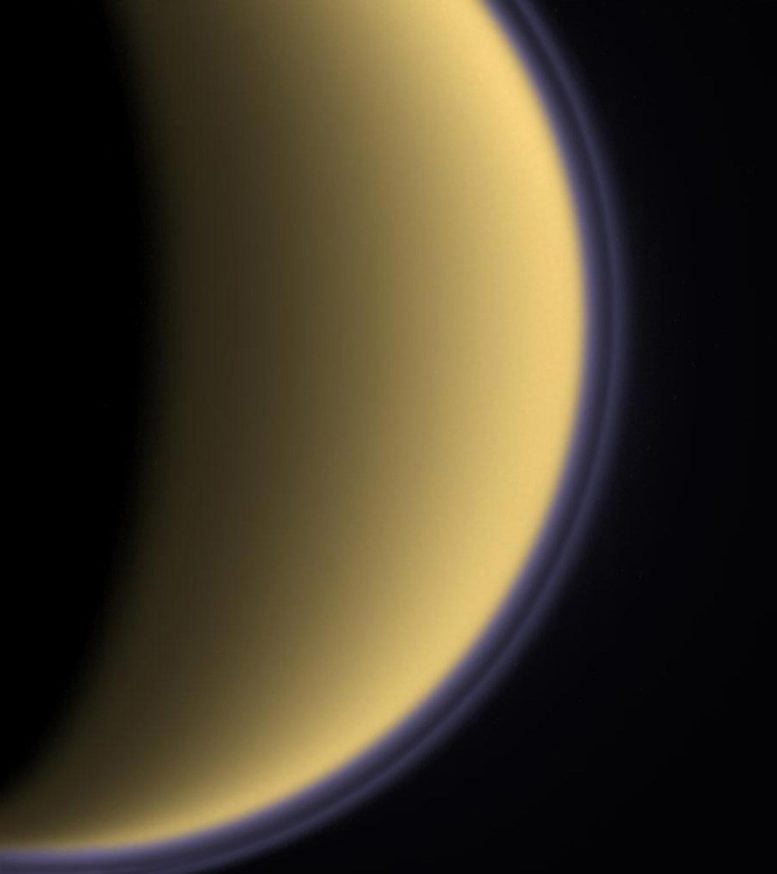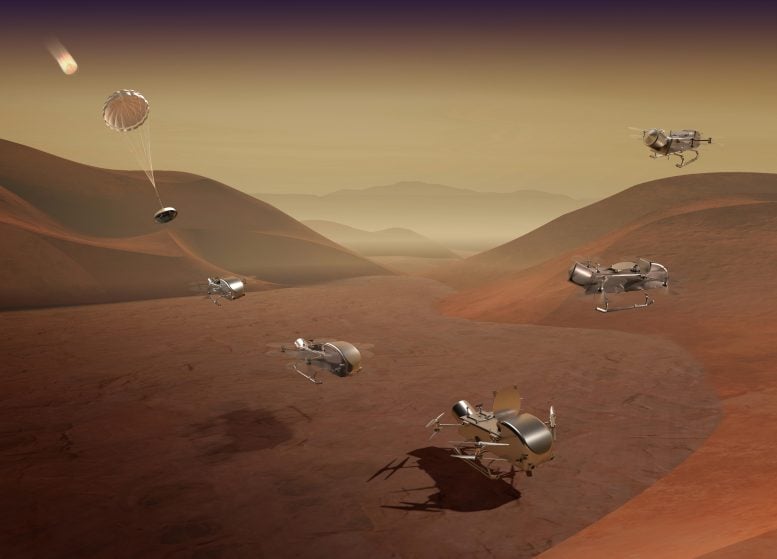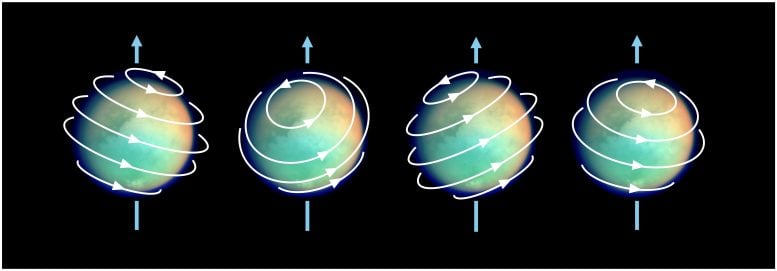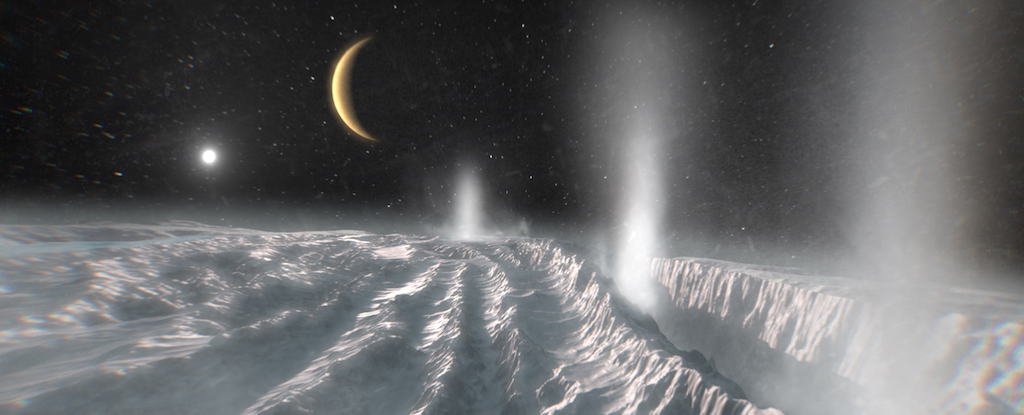
Titan’s atmosphere tilts and shifts seasonally. The discovery shapes future exploration.
Researchers at the University of Bristol have uncovered unusual behavior in Titan’s atmosphere for the first time.
Using data from the Cassini-Huygens mission, a collaboration between NASA, the European Space Agency (ESA), and the Italian Space Agency, the team found that Saturn’s largest moon has a dense, hazy atmosphere that does not rotate in step with the surface. Instead, it oscillates like a gyroscope, shifting position with the change of seasons.
Titan stands out as the only moon in the Solar System with a substantial atmosphere, a feature that has fascinated planetary scientists for decades. After analyzing 13 years of thermal infrared measurements collected by Cassini, the researchers were able to chart how Titan’s atmosphere leans and drifts over time.
A gyroscopic wobble
“The behavior of Titan’s atmospheric tilt is very strange!” said Lucy Wright, lead author and postdoctoral researcher at Bristol’s School of Earth Sciences. “Titan’s atmosphere appears to be acting like a gyroscope, stabilizing itself in space.
“We think some event in the past may have knocked the atmosphere off its spin axis, causing it to wobble.
“Even more intriguingly, we’ve found that the size of this tilt changes with Titan’s seasons.”

Tracking seasonal shifts
The researchers examined the symmetry of Titan’s atmospheric temperature field and discovered that it is not perfectly aligned with the pole, as had been anticipated. Instead, the center drifts gradually, following Titan’s extended seasonal cycle, in which a single year spans nearly 30 Earth years.
Professor Nick Teanby, co-author and planetary scientist at Bristol said: “What’s puzzling is how the tilt direction remains fixed in space, rather than being influenced by the Sun or Saturn.
“That would’ve given us clues to the cause. Instead, we’ve got a new mystery on our hands.”
Implications for future missions
This discovery will impact NASA’s upcoming Dragonfly mission, a drone-like rotorcraft scheduled to arrive at Titan in the 2030s. As Dragonfly descends through the atmosphere, it will be carried by Titan’s fast-moving winds—winds that are about 20 times faster than the rotation of the surface.

Understanding how the atmosphere wobbles with the seasons is crucial for calculating the landing trajectory of Dragonfly. The tilt affects how the payload will be carried through the air, so this research can help engineers better predict where it will touch down.
Broader significance of findings
Dr. Conor Nixon, planetary scientist at NASA Goddard and co-author of the study, added: “Our work shows that there are still remarkable discoveries to be made in Cassini’s archive.
“This instrument, partly built in the UK, journeyed across the Solar System and continues to give us valuable scientific returns.
“The fact that Titan’s atmosphere behaves like a spinning top disconnected from its surface raises fascinating questions—not just for Titan, but for understanding atmospheric physics more broadly, including on Earth.”
The team’s findings contribute to a growing body of research suggesting Titan is not just Earth-like in appearance but an alien world with climate systems all its own, and many secrets still hidden beneath its golden haze.
Reference: “Seasonal Evolution of Titan’s Stratospheric Tilt and Temperature Field at High Resolution from Cassini/CIRS” by Lucy Wright, Nicholas A. Teanby, Patrick G. J. Irwin, Conor A. Nixon, Nicholas A. Lombardo, Juan M. Lora and Daniel Mitchell, 20 May 2025, The Planetary Science Journal.
DOI: 10.3847/PSJ/adcab3
Never miss a breakthrough: Join the SciTechDaily newsletter.
Follow us on Google, Discover, and News.
Source link

